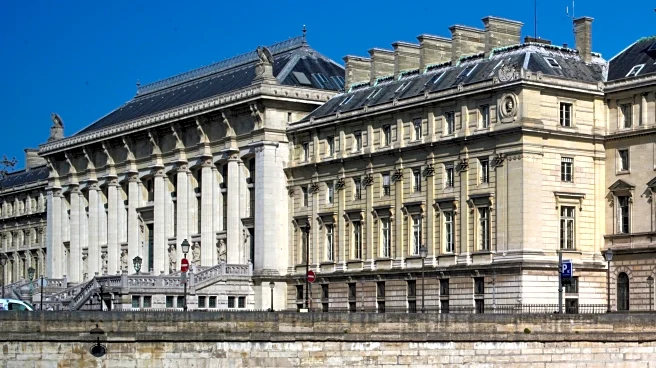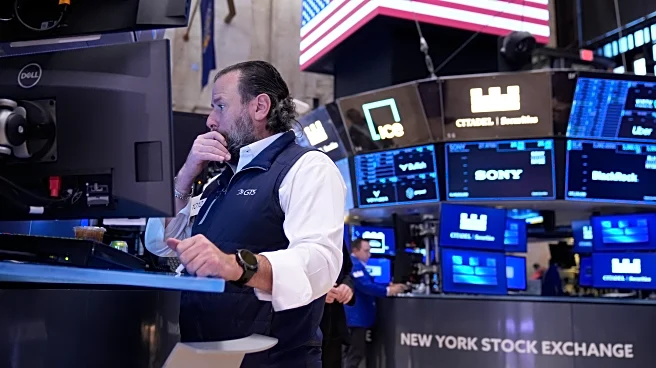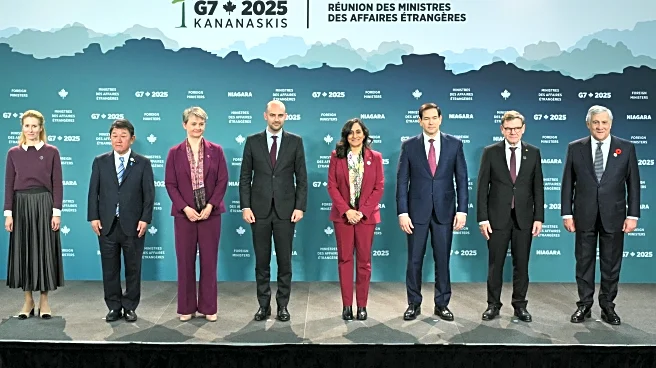TORONTO (AP) — Oliver Laxe, the spiritually minded, 6-foot-6-inch French-born Galician director, knows that his new film, “Sirāt,” has given him a reputation to live up to.
“When I’m on a plane and things are going bad, I say, “Come on, you’re the director of ‘Sirāt.' You cannot be scared,” Laxe, 41, says, laughing.
Since its prize-winning debut at the Cannes Film Festival, “Sirāt” has been one the year’s most talked about films. It's about a father
(Sergi López) who, with his 12-year-old son (Bruno Núñez Arjona), is searching for his teenage daughter. After arriving at a remote rave in southern Morocco, where they have no luck, they flee with a small caravan of ravers who ride across a desert expanse.
A primal beat sounds through “Sirāt,” which morphs into an existential journey through approaching apocalypse. World War III is referenced on the radio, and the arid landscape where water is in short supply reverberates with the effects of climate change. “Sirāt,” which means “path” or “way” in Arabic, is uncommonly blunt about what the future holds for the film's characters, and for us.
“Sirāt” on Friday begins playing a one-week run in select theaters to qualify for the Oscars, where it is Spain's submission. The Neon release, which will hit wider theaters in early 2026, has already been a box-office hit in Spain and in France, drawing comparisons to both “The Wages of Fear” and “Mad Max.” Not everyone has gone along with the intense odyssey of “Sirāt,” but it has, undeniably, struck a nerve.
“For me, cinema isn’t about ‘I like it’ or ‘I don’t like it,’” says Laxe. “My purpose is: Did it move something?”
During a stop earlier this fall at the Toronto International Film Festival, Laxe — a lanky and soulful presence who might have been a romance cover model if he weren't so philosophical — met up with The Associated Press to talk about the spiritual underpinnings of “Sirāt” and why filmmaking can't be the same, anymore.
LAXE: The main purpose was to provoke the spectator to look inside. I think it’s the only issue we have. If you put all the audio-visual productions in a box, I can say that 98% of these productions are made for destruction. I think as humans beings, we need to look inside. It’s the only way to really be free and emancipated people, you know? And sometimes to look inside, it’s not nice what we see. “Sirāt” is a rite of a passage.
LAXE: Totally. I think the world we approaching will be like this: Life will push us so much into a border. Life will ask us what it is to be a human being. We don’t have to be really intuitive to know that with climate change and new technology, artificial intelligence, the question is: What is it to be a human being? What I’m studying about psychotherapy is that all of us are broken. We are not connected with this wound, and that’s why we have more fears, more anguish. I’m really optimistic for the future. It will be tough, but we will be obliged to look inside.
LAXE: Yes, though I don’t want to sound too paternalistic. The pain of the wound is so strong that it’s difficult to carry it. That’s why we need destruction. All my mercy to all of us. We do what we can do. But, yes, I think it’s time to look inside. I didn’t want to make a film. (Laughs)
LAXE: No, I think the challenges that an artist has are different than before. That’s why I’m happy. Cannes was a test for the film. People say to me: “This is not just a film. This is a ceremony.” It’s the way I understand a film has to be. To change yourself. Look at the ancient Greeks. They didn’t go to the theater to have fun. They don’t meet and have an aperitif and after have dinner. It was a war. They were going to theater to purge their ghosts in order to experiment with things that they don’t in life in order to save society.
LAXE: I started to deal with the images of “Sirāt” in 2011. It was after the release of my first feature, a film I did with 20,000 euros in Tangiers with my neighbors. I started to live in a palm grove in the south. Images also came from a trip I did in Senegal and Mauritania. There is something about the desert and the mountains of Morocco. It’s a wounded landscape. You are contemplating the creation of the planet, all the erosion, all the layers. I like this landscape because you feel small. That doesn’t give you anguish. It’s the opposite. It gives you humility. I’m a human being who’s looking for transcendence.
LAXE: I like to go to my limits. I think that art, rave culture and spirituality are about this, to cross minefields, to take a path where you don’t know where you’re going. All my shootings are really extreme, probably because I’m a junkie of images. This was one of my easiest shootings. Authors, we are the worst enemies of our films. We need to stop at the right time. We want to say too many things, so we don’t evoke. We kill images. The first images I developed dancing on dance floors, imaged during a connection with other people. The thing is to protect these images that are wild and raw, and to project them through the writing process, the preproduction process and shooting, in order to arrive at the end of the process, and they’re still alive.
LAXE: I have to tell you, I was scared. My practice is always about my intention. The main thing is inside, how you will assume your artistic gesture and all the consequences. When I was doing this film, the feedback was really difficult. For example, one friend told me, “We don’t want people to suffer.” So obviously you have doubts. You ask yourself: I’m working for who? But you keep going. Obviously I was scared but I knew I had to jump into the abyss. I knew I had to cross my own minefield. Some people, they are shaken watching the film. They get scared. But they tell me when they arrive home, they feel a kind of revival. It’s like they feel more life, hopefully.















